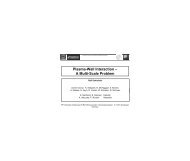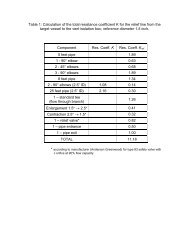The Nu-SNS proposal - ORNL Physics Division - Oak Ridge ...
The Nu-SNS proposal - ORNL Physics Division - Oak Ridge ...
The Nu-SNS proposal - ORNL Physics Division - Oak Ridge ...
Create successful ePaper yourself
Turn your PDF publications into a flip-book with our unique Google optimized e-Paper software.
56<br />
'<br />
Fe( ν , ν xn)<br />
x<br />
55<br />
Fe<br />
dominates.<br />
For lead, cross sections for the following neutral- and charged-current channels are desirable:<br />
'<br />
Pb(<br />
ν<br />
x,<br />
ν<br />
xn)<br />
'<br />
Pb(<br />
ν<br />
x,<br />
ν<br />
x<br />
2n)<br />
−<br />
Pb(<br />
ν , e n)<br />
A A−1<br />
A A−2<br />
A A−1<br />
e<br />
Since they are a both a necessary calibration for future supernova neutrino experiments and are<br />
important to nucleosynthesis simulations, iron and lead cross section measurements are a very<br />
high priority.<br />
3.4.3 Deuterium<br />
Neutrino experiments that use heavy water, like SNO, can detect supernova neutrinos via four<br />
main channels:<br />
− ' −<br />
e ( ν<br />
x<br />
, ν<br />
x<br />
) e<br />
'<br />
d(<br />
ν n x<br />
, ν<br />
x<br />
) p<br />
−<br />
d(<br />
ν e<br />
, e p)<br />
p<br />
d ( _ +<br />
ν e , e n)<br />
n<br />
Measurement of the reaction d(ν e ,e - p)p, which has been suggested as a calibration for the<br />
reaction p(e + ,ν e )d (part of the pp chain of reactions powering the Sun), would also provide a<br />
calibration for heavy water neutrino detectors. Monte Carlo studies suggest that for the source<br />
brightness predicted for the <strong>SNS</strong>, two years of data in approximately fifteen fiducial tons of<br />
D 2 O would yield a cross section measurement with an accuracy of a few percent [84], which<br />
in turn may enable a more accurate interpretation of SNO data. This measurement would<br />
also serve as an important test case for the effective field theory approach to neutrino-nucleus<br />
interactions (see [85] and references therein).<br />
Pb<br />
Pb<br />
Bi<br />
3.4.4 Carbon<br />
Large neutrino detectors that use liquid scintillator, such as KamLAND and MiniBoone, are<br />
+<br />
ideally suited to detect antineutrinos from a supernova collapse via ν<br />
e<br />
+ p → e + n . In addition,<br />
a significant number of neutral- and charged-current interactions could be detected [88] via:<br />
C(<br />
ν , e )<br />
12 − 12<br />
e<br />
N gs<br />
12 − 12 *<br />
C( ν e<br />
, e ) N<br />
12<br />
' 12 *<br />
C( ν<br />
x,<br />
ν<br />
x<br />
) C<br />
It is clear that every recorded neutrino interaction from the next galactic supernova will be<br />
extremely important. Detailed measurements of neutrino interactions in multiple channels will<br />
help untangle intensities and temperature of individual neutrino species. Although ν+Carbon<br />
interactions have been measured by LSND and KARMEN, ν-<strong>SNS</strong> measurements of double<br />
ν-<strong>SNS</strong> Proposal 32 8/4/2005



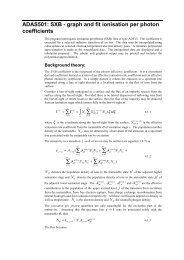
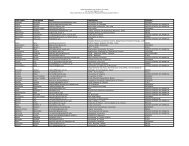
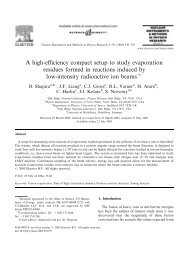
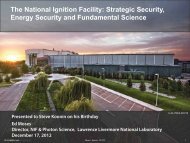

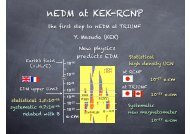
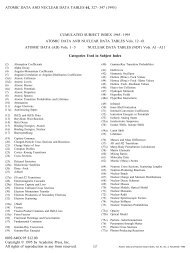


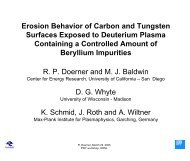
![Mixed-mode Calculations within the Nuclear Shell Model [pdf]](https://img.yumpu.com/28265410/1/190x146/mixed-mode-calculations-within-the-nuclear-shell-model-pdf.jpg?quality=85)
